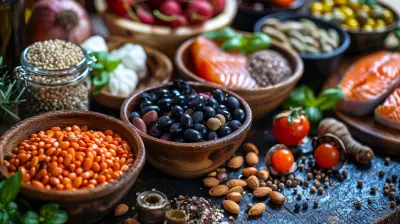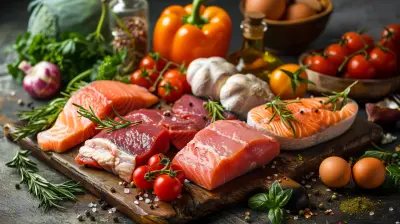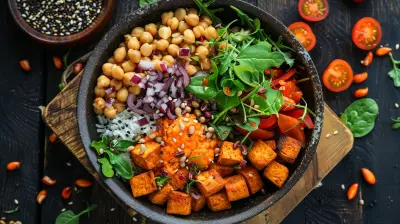Sports and Paleo: How Athletes Can Thrive on the Paleo Diet
26 May 2025
Let’s talk about food, fitness, and feeling fantastic. Whether you’re hitting the gym hard, running marathons, or competing at a high level, what you eat matters. A lot. And guess what? The Paleo diet, which takes us back to our caveman roots, might just be the secret weapon you didn’t know your sports performance needed.
But wait—can athletes really thrive on a diet that cuts out grains, dairy, and processed foods? Short answer: absolutely. Long answer? Well, that’s what we’re diving into.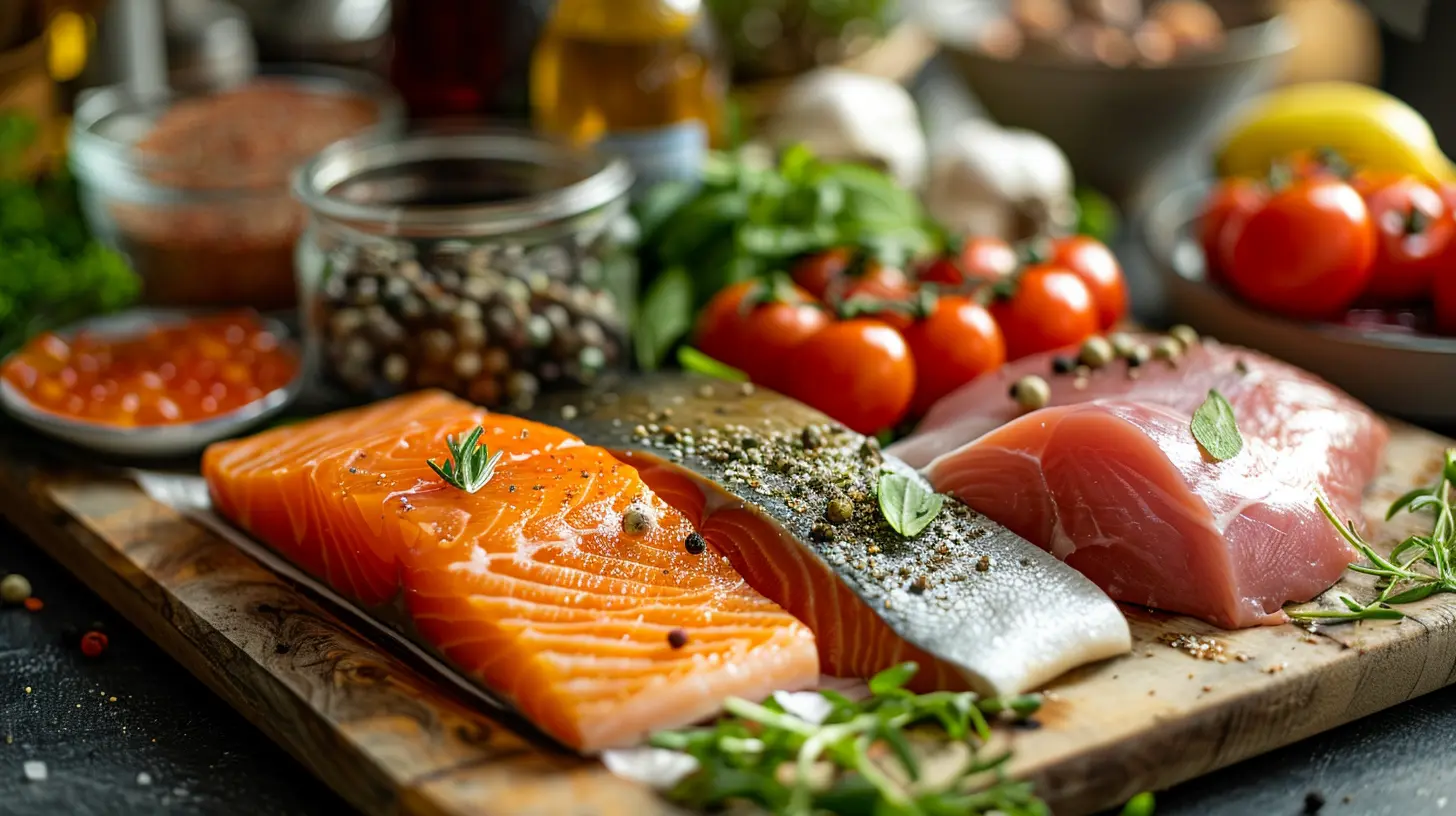
What Is the Paleo Diet?
Alright, before we hit the ground sprinting, let’s clear up what Paleo actually means.The Paleo diet, also known as the "caveman" or "hunter-gatherer" diet, is all about eating the way our ancient ancestors did. Think lean meats, fish, fruits, vegetables, nuts, and seeds. The key idea: if your great-great-great (like, a lot of "greats") grandparents couldn't eat it, neither should you.
So, here’s what you’ll ditch:
- Grains (yes, goodbye bread and pasta)
- Legumes (no peanuts or beans)
- Dairy
- Processed foods
- Refined sugar
And what you’ll devour:
- Grass-fed meats
- Wild-caught fish
- Eggs
- Fresh fruits and veggies
- Healthy fats like avocado, nuts, and coconut oil
Sounds pretty clean, right? But what does this have to do with sports and performance?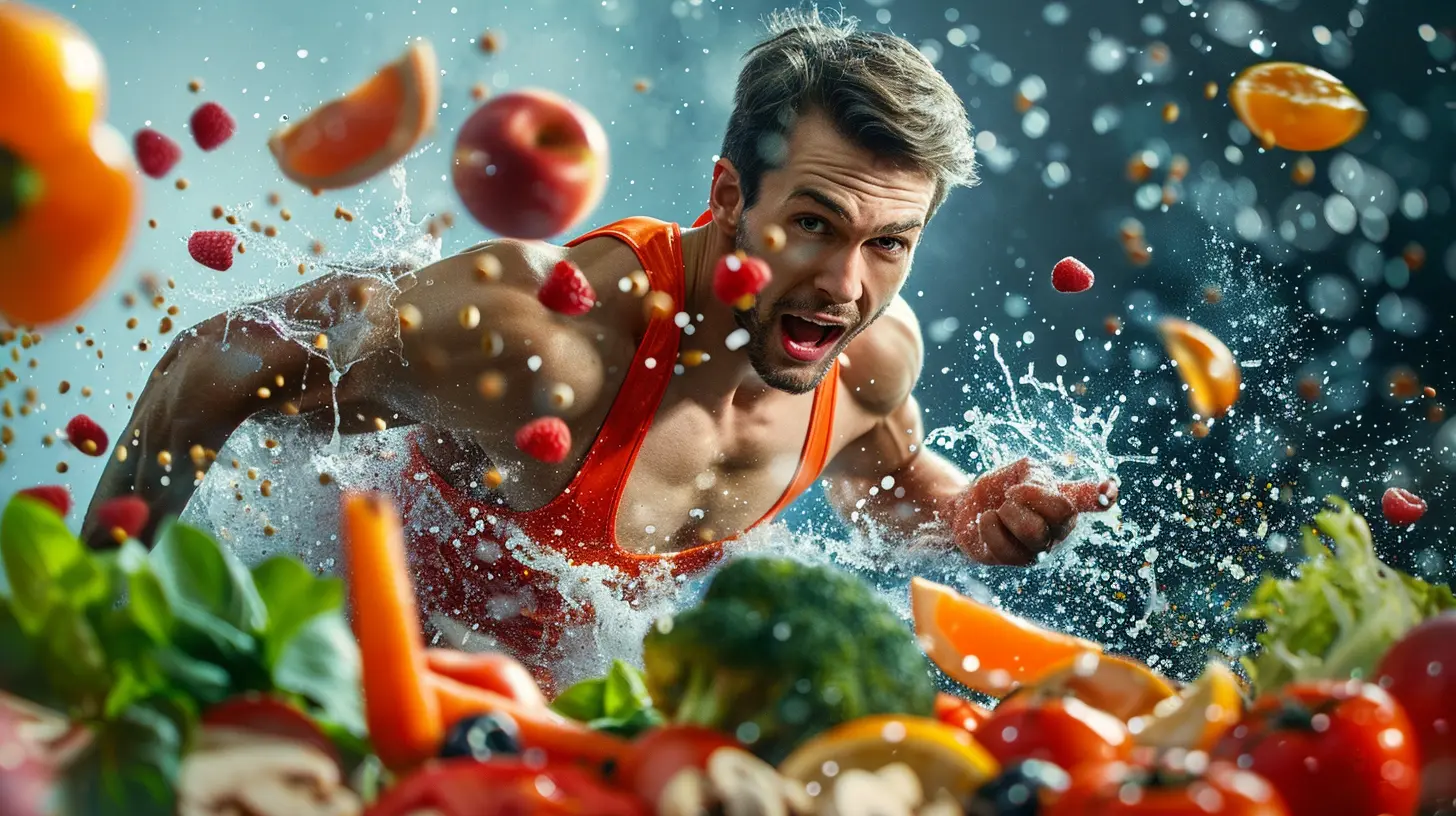
Can Athletes Go Paleo?
Here’s the million-dollar question: can athletes perform well on a Paleo diet?The short answer? Heck yes.
Let’s bust the myth right now—carbs aren’t only found in bread and pasta. You can absolutely get energy-rich, performance-boosting carbs from Paleo-friendly sources like sweet potatoes, fruit, and even root veggies like parsnips and beets.
Athletes need fuel, recovery power, and anti-inflammatory foods. Paleo just so happens to check all those boxes. It’s not just a "weight loss" deal—it’s a full-body optimization strategy.
Benefits of the Paleo Diet for Athletes
1. Cleaner Fuel for Better Performance
Think of your body like a high-end sports car. You wouldn’t fuel it with low-grade gas, right? Same thing for your body. The Paleo diet is all about nutrient-dense, real food that provides premium fuel.No filler. No junk. Just clean-burning energy.
This means you’ll get:
- Consistent energy levels (goodbye crashes)
- Improved endurance
- More mental clarity
- Better focus during training and competition
2. Enhanced Recovery
Training hard? Then you know recovery isn’t optional—it’s everything.The anti-inflammatory benefits of the Paleo diet (thanks to omega-3 rich fish, antioxidant-loaded fruits, and healthy fats) help your body bounce back faster. Less swelling, reduced soreness, and quicker muscle repair? Yes, please.
3. Reduced Inflammation
Most athletes battle inflammation in one form or another. Whether it’s joint pain, sore muscles, or nagging injuries, chronic inflammation is the enemy of progress.Because Paleo cuts out inflammatory foods (like sugar, seed oils, and processed grains), you’re naturally reducing the triggers that slow you down. It's like taking your muscles on a wellness retreat.
4. Improved Gut Health
Your gut is like command central for your health. When it's happy, you’re happy. Paleo-friendly fermented foods, loads of fiber from veggies, and no processed junk means you’re supporting your gut flora—and that leads to better digestion, improved nutrient absorption, and even boosted immunity.For athletes, that translates into more energy, fewer sick days, and a stronger body overall.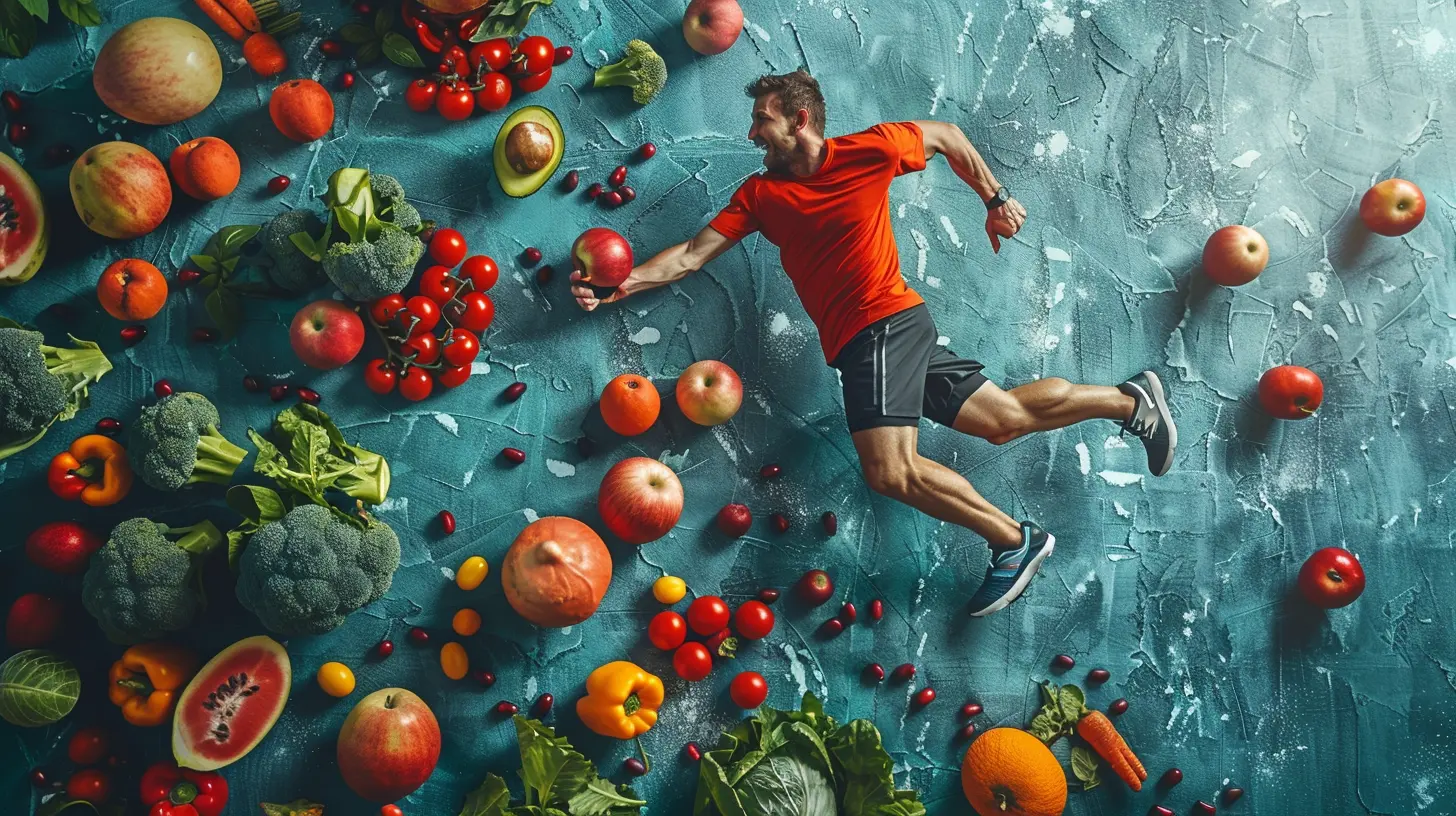
What Paleo-Friendly Foods Work Best for Athletes?
Let’s get practical. Here’s some go-to, athlete-approved, Paleo-friendly foods to keep in your arsenal:✅ Carbohydrate Sources (For Energy):
- Sweet potatoes- Bananas
- Berries
- Beets
- Pumpkin
- Butternut squash
✅ Protein Powerhouses:
- Grass-fed beef- Chicken thighs
- Turkey breast
- Salmon (wild-caught when possible)
- Eggs
✅ Healthy Fats (For Long-Term Fuel):
- Avocados- Almonds (and other nuts)
- Coconut oil
- Olive oil
- Chia and flax seeds
✅ Hydration & Electrolytes:
- Coconut water- Bone broth (rich in minerals)
- Sea salt (for electrolyte balance)
If you’re working out for hours or doing high-intensity training, you might need to tweak quantities but trust me—it's not hard once you get into the groove.
Timing Is Everything - Pre and Post Workout on Paleo
So you’re ready to fuel and recover like a savage (in the good way). Here’s how to time your meals for max performance:🏋️ Pre-Workout:
You want something that gives you quick energy but doesn’t weigh you down. Try a small banana with almond butter or a hard-boiled egg alongside a handful of berries.🧘♂️ Post-Workout:
This is your recovery window. Think protein + carbs. Grilled chicken with roasted sweet potato is a classic choice. Or blend up a smoothie with banana, spinach, coconut milk, and a scoop of collagen protein.Keep it simple. Keep it clean. Let your food work for you.
But… What About Protein Powders and Supplements?
Let’s be real—we’re busy. Sometimes you can’t whip up a 100% Paleo meal between training sessions. That’s where Paleo-ish options come in handy.Look for:
- Collagen protein powders (made from grass-fed beef)
- Plant-based Paleo-friendly protein blends
- Electrolyte powders with no sugar or additives
Just remember to read the labels. If you can’t pronounce it, it probably wasn’t Paleo 10,000 years ago.
Real Talk: Challenges Athletes Face on Paleo
No diet’s perfect. Paleo can feel restrictive at first, especially when teammates are munching bagels at practice or you miss the convenience of a post-workout protein bar.Here’s how to keep it sustainable:
- Meal prep like a boss: Cook in bulk, store in glass containers, and plan snacks.
- Get creative: Paleo pancakes made with almond flour? Yes. Cauliflower rice bowls? You’ll love them.
- Support matters: Surround yourself with like-minded eaters or at least a supportive crew.
- Listen to your body: Need more carbs on heavy training weeks? Add in more sweet potatoes and fruit.
The key is flexibility within your Paleo framework. It’s a lifestyle, not a prison sentence.
Athlete Success Stories on Paleo
Still skeptical? Plenty of elite athletes have embraced the Paleo way.Take CrossFit athletes for example—many follow a Paleo or Paleo-Zone approach to stay lean, strong, and agile. NFL players, marathon runners, and even Olympians have credited Paleo with reducing joint pain, speeding up recovery, and enhancing overall performance.
It’s not hype—it’s nourishment tailored to your high-performance needs.
Paleo for Different Sports
Here’s how Paleo can support various types of athletes:🏃 Endurance Athletes (Runners, Cyclists):
- Needs: Long-lasting fuel, quick recovery- Paleo Help: Clean carbs from fruit and tubers, anti-inflammatory foods for joint health
🏋️ Strength Athletes (Weightlifters, CrossFitters):
- Needs: Muscle growth, explosive energy- Paleo Help: High protein intake, omega-3s for muscle repair, energy from fats and carbs
🧗 Team Sports (Soccer, Basketball, Football):
- Needs: Agility, endurance, fast recovery- Paleo Help: Nutrient density, hydration support, reduction in inflammation
Whatever your sport, Paleo is adaptable. You just need to tweak your macro balance based on your unique activity level.
Is the Paleo Diet Right for YOU?
Now let’s get personal. Should you go Paleo?If any of these apply to you:
- You’re tired of feeling bloated, sluggish, or inflamed
- You want real, lasting energy—not sugar highs and crashes
- You want to recover faster and train better
- You’re into eating food your body actually recognizes
Then Paleo might be your golden ticket. Start slow, have a plan, and give it 30 days. Your body will tell you the rest.
Final Thoughts
Here’s the bottom line: you really can combine sports and Paleo. In fact, they might just be the power couple of your athletic dreams. Clean food, better recovery, steady energy, and fewer injuries?Sign me up.
Like any lifestyle change, it’s about finding what works for your body and your goals. So whether you’re aiming for the podium, a new personal best, or simply feeling better every day—Paleo might be the performance edge you’ve been waiting for.
*Train hard. Eat smart. Recover like a champ.
all images in this post were generated using AI tools
Category:
Paleo DietAuthor:

Arthur McKeever
Discussion
rate this article
3 comments
Hunter McDowell
The article effectively highlights the synergy between the Paleo diet and athletic performance, emphasizing nutrient density and natural foods. However, it should consider individual variations in dietary needs and the importance of tailored nutrition strategies for optimal results.
May 30, 2025 at 4:52 AM

Arthur McKeever
Thank you for your feedback! I completely agree that individual dietary needs are crucial for optimal performance, and I'll consider incorporating tailored nutrition strategies in future discussions.
Noah O'Brien
Thank you for shedding light on the intersection of sports and the Paleo diet. It's inspiring to see how athletes can fuel their bodies naturally. Your insights offer valuable guidance for those looking to enhance both performance and overall well-being through mindful nutrition.
May 29, 2025 at 4:15 AM

Arthur McKeever
Thank you for your kind words! I'm glad you found the insights helpful for enhancing athletic performance and well-being through mindful nutrition.
Murphy McCoy
Who knew cavemen were the original athletes? Now, if only they had protein shakes and yoga!
May 27, 2025 at 3:04 AM

Arthur McKeever
Absolutely! Cavemen were indeed the original athletes, relying on their natural instincts and strength. Imagine how they'd excel with modern training tools like protein shakes and yoga!
